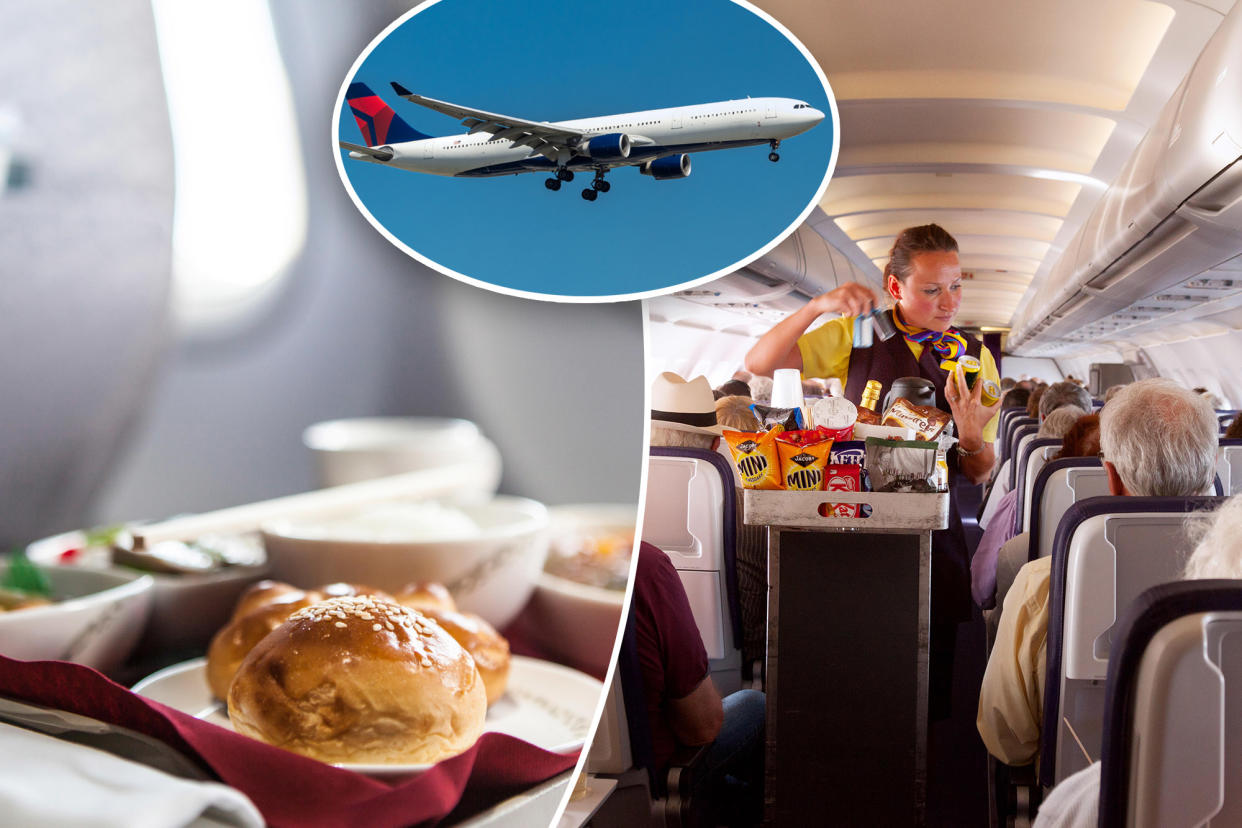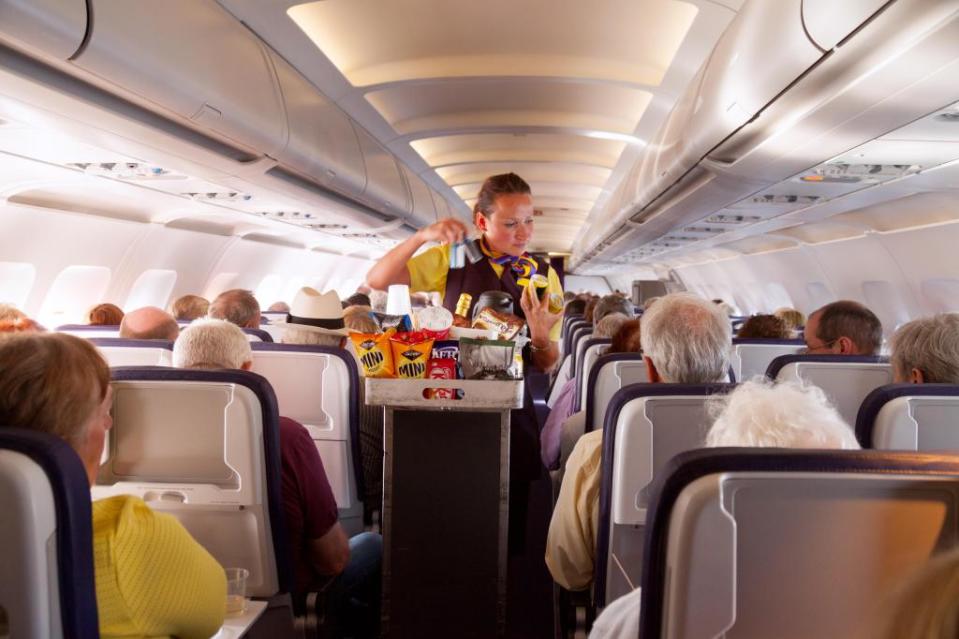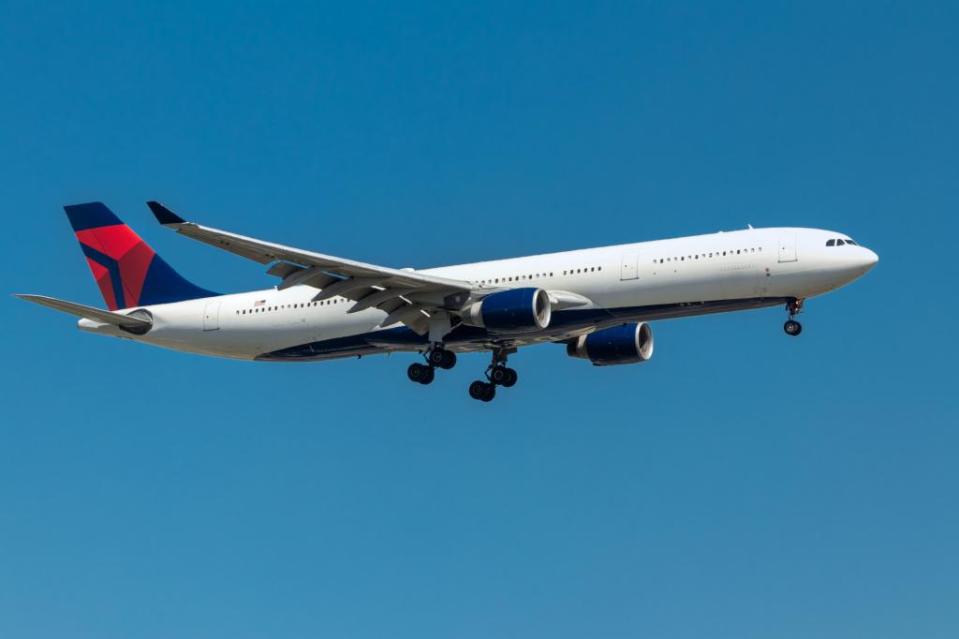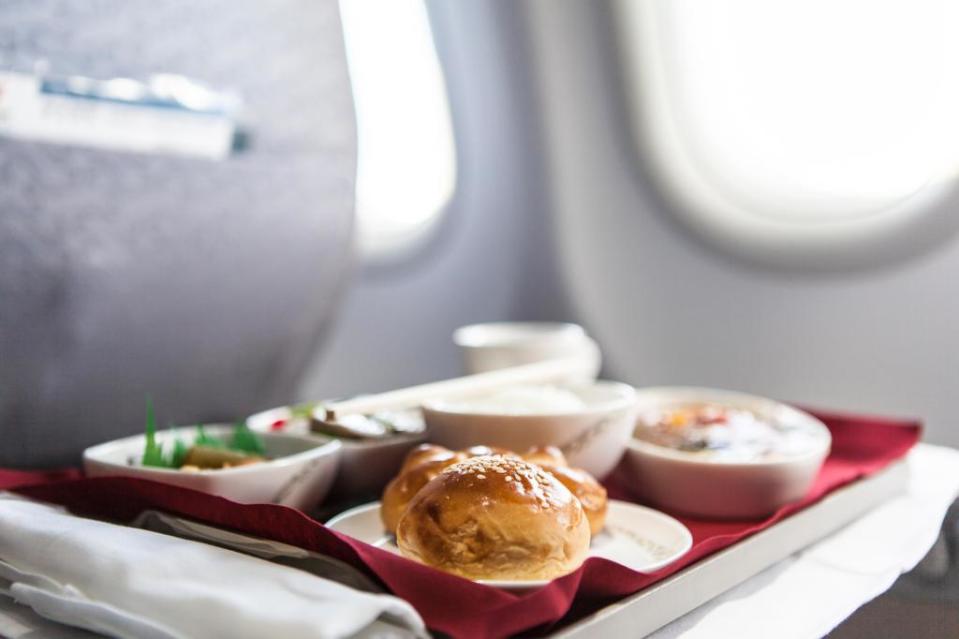Why food tastes so bad on airplanes, according to science

Have you ever considered why things taste different at 30,000 feet?
Due to the dryness of the air in the cabin, humans experience dehydration that diminishes every drop of moisture needed from our nasal and bronchial passages — which is why our senses of taste and smell change so drastically inflight, Food & Wine reported.
On top of the dehydration, the higher air pressure and noise level of 80 decibels-plus also aren’t friends to those senses.

On a flight, once the plane reaches cruising altitude, half of the air we breathe comes from the atmosphere through which the plane is flying, and the other half is filtered air.
This means that the air in the airplane cabin is dry with a humidity level of about 12%.
Compare that to the daytime atmospheric humidity in the Mojave Desert in California, which hovers between 10% and 30% depending on the season, and you’ll realize just how low that number is.
There’s not much to be done about our senses of taste and smell altering at in-flight altitudes. And though you might be able to taste some things, it likely won’t be the same as when you’re on the ground.
For example, salty and sweet tastes are especially weaker at higher altitudes — so, to get through to your senses, the food you receive on a plane will have approximately 20% more salt in a savory dish than usual, and about that or more sugar for dessert.
That’s according to a recent Post interview with Charles Spence, an experimental psychologist at England’s Oxford University who studies how certain environments and sounds impact taste.

However, he also intriguingly shared that “wearing noise-canceling headphones can actually make the food and drink taste better in the air.”
A 2011 study from Germany’s renowned Fraunhofer Institute staged a trial in which “in-flight diners” sat in cramped seats in a pressure chamber that was designed to simulate the low air pressure of an airplane cabin at 30,000 feet.
The airline Lufthansa, which commissioned the study, provided food to the participants to eat while they were surrounded by the 80-decibel drone of aircraft engines and while their seats vibrated to mimic turbulence.
The study found that tastes described as bitter, sour and spicy were the tastes that held up during the in-flight experience. Tomato juice — like in a bloody mary — also seemed to be immune to losing its taste in the sky.
Other tests have shown that one set of tastes that seems to stay consistent under altitude changes is that of umami, which is the savory core taste of Japanese cuisine, such as soy-inflected sauces, yakitori and miso. This is possibly because umami dishes tend to have higher sodium levels.
“If it weren’t for the boredom many feel while flying, the best recommendation would always be to eat on the ground,” Spence said.

But if you want decent food in the sky, opt for something spicy or salty, like Mexican food or sushi.
“Anything with umami taste, so Parmesan cheese, mushrooms, tomato, etc., and, of course, to drink a bloody mary given the double dose of umami both from tomatoes and from the Worcestershire sauce,” Spence explained.

